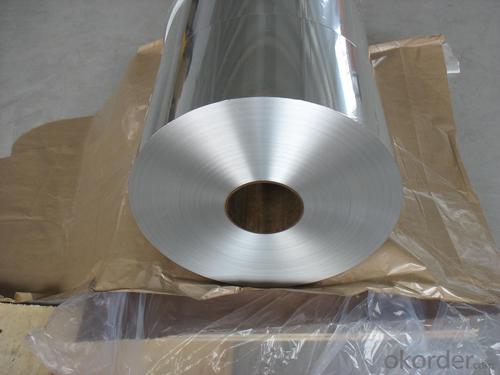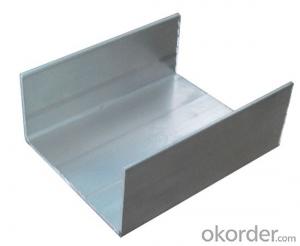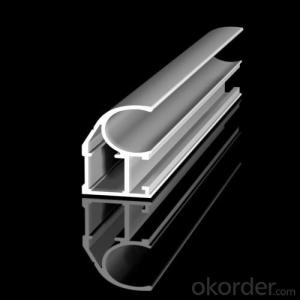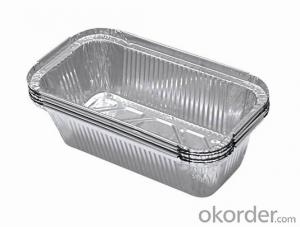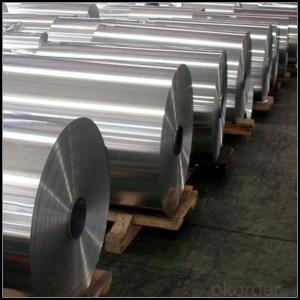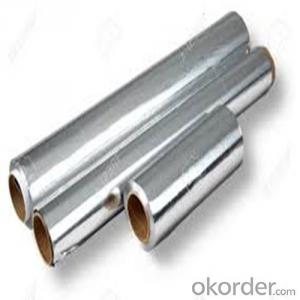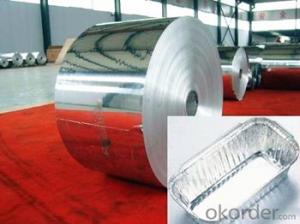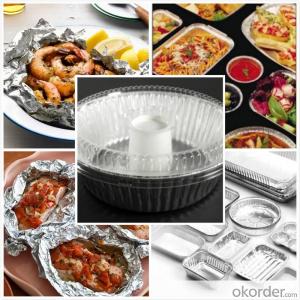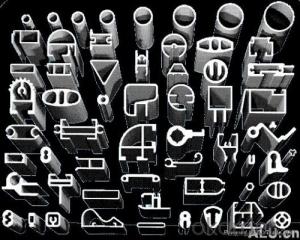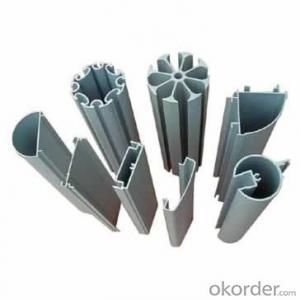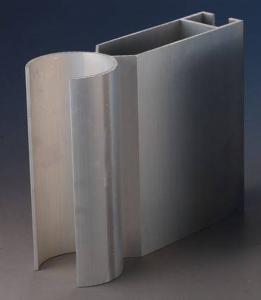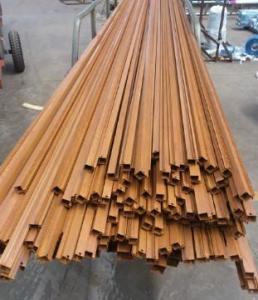Aluminum Extrusions Profiles Wholesale for Food Container Aluminum Foil with Best Quality
- Loading Port:
- Shanghai
- Payment Terms:
- TT OR LC
- Min Order Qty:
- 5 m.t.
- Supply Capability:
- 2000 m.t./month
OKorder Service Pledge
OKorder Financial Service
You Might Also Like
Specification
Structure of Aluminium Foil for Food Container with Best Quality Description:
We have more than 10 years experiences on manufacturing kinds of aluminum profiles, such as Aluminum Window & Door profiles, Aluminum tile trim profiles, Aluminum profiles for LED light, Round/Square General profiles, Aluminum heat sink, Aluminum heating insulation profiles, Curtain wall Aluminum profiles, and others Industry profiles.
Our products have exported to all over the world, and we also have a large of market share in Algeria, Angola, Philippine, Guinea, Ghana, South Africa, Nepal, Nigeria, Tanzania, Iraq etc.
Main Features of the Aluminium Foil for Food Container with Best Quality:
1, Strong R&G: help customers finalize the design, strong tool design ability, excellent, pressing and surface treatment technology;
2, Strong quality management: ISO&SGS SYSTEM;
3, 24 hours on-line communication, professional, patient, flexible;
4, High capacity of manufacturing and wide range of products;
5, We can provide secondary manufacturing.
6, High corrosion resistance, high weather resistance and good wear resistance.
7, Alternative surface treatment: Colorful ANODIZE, POWDER COATING, ELECTROPHORESIS & WOODEN GRAIN. Plentiful colors upon your needs.
8, Excellent material for smooth and subtle edges, elegant appearance.
9, Strong coated adhesion which is suitable for construction and industrial material.
Images of the Aluminium Foil for Food Container with Best Quality:
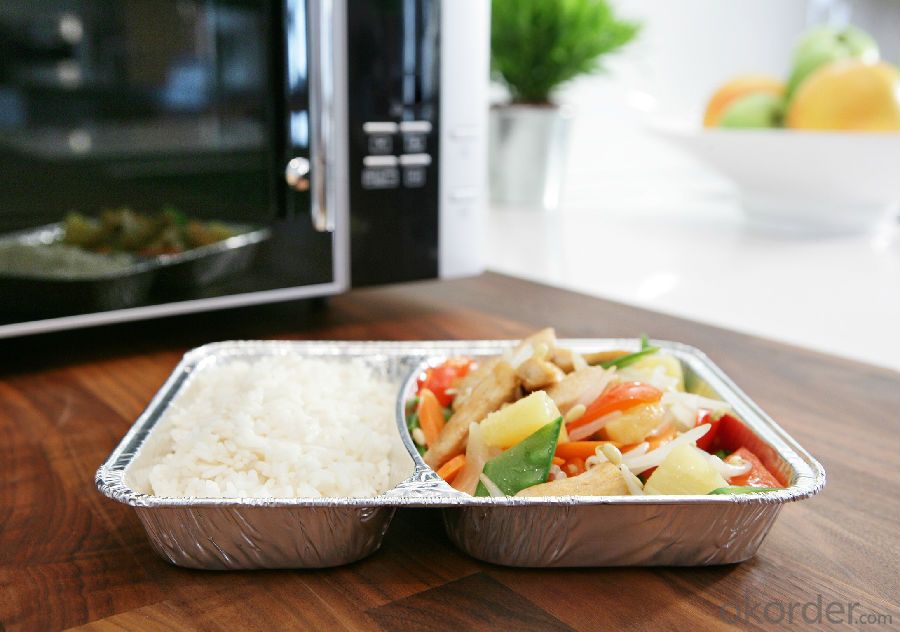
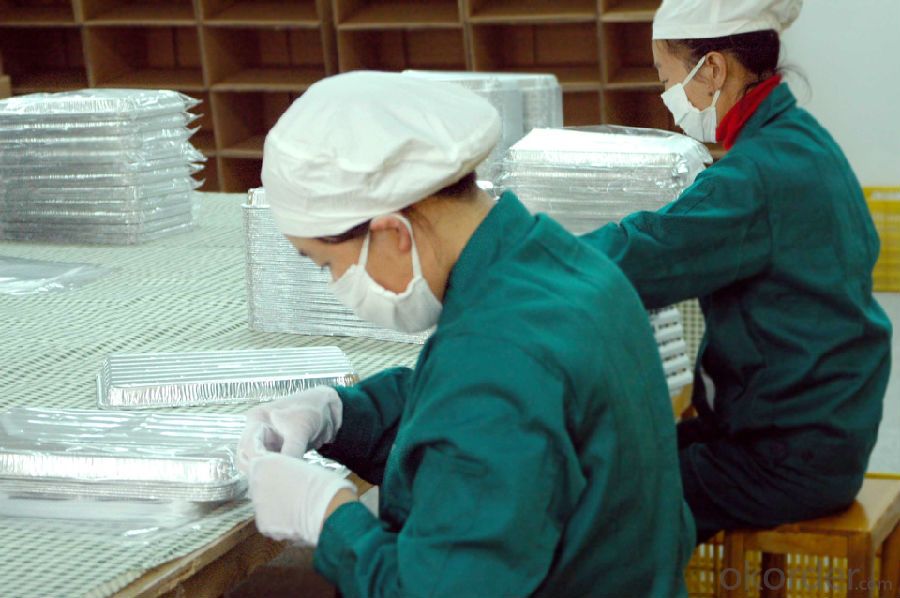
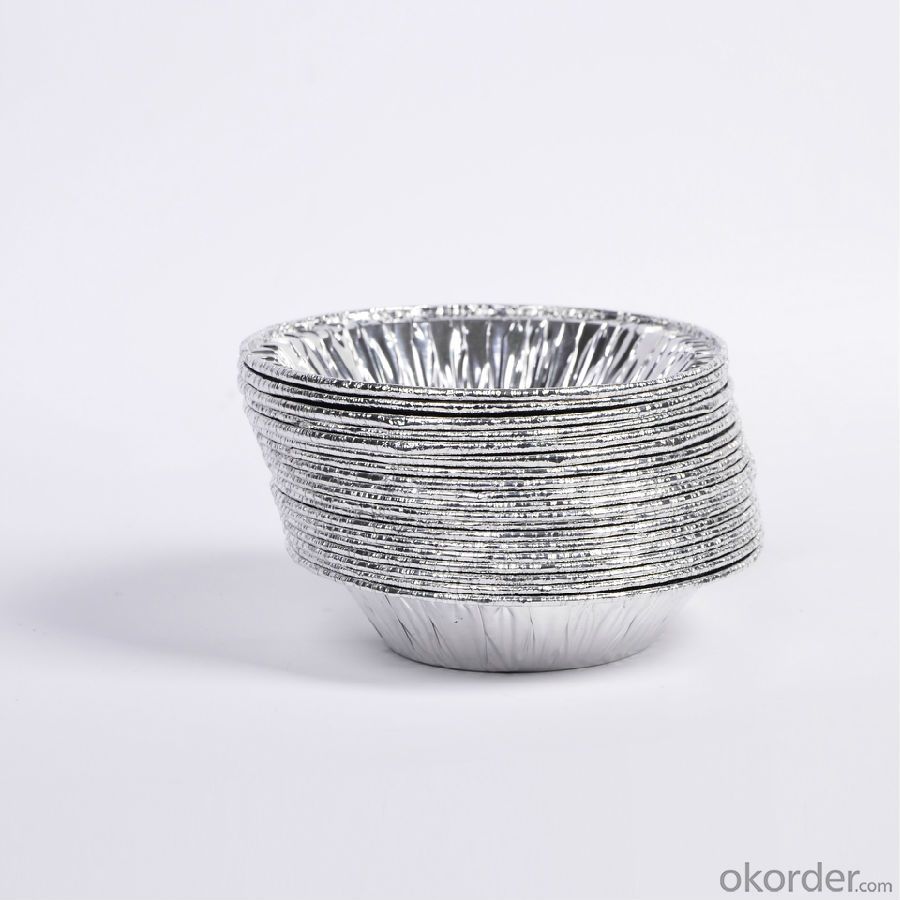
Aluminium Foil for Food Container with Best Quality Specification:
Material | Alloy Aluminum 6063,6061,6005 or customer nominated |
Temper | T3, T4, T5, T6 |
Surface | Anodize, electrophoresis, powder coating, PVDF coating, wood grain painting, matted, etc. |
Colour | Any colour based on Standard Germany RAL Mark |
Length | Coating 6.5 meters, Anodizing 6.5 meters, Mill finish 5 meters |
Press Machine | 500-4000 tons all together 64 press lines. |
Fabrication | 1. Windows and doors; 2. Drilling; 3. Bending; 4. Cutting; 5. etc. |
Certificate | ISO 9001 |
Moulding | 1. Using our moulds, no fee; |
2. Using customer drawing, opening mould, usually about 10~50 tons then the moulding can be refunded. | |
3. Mould cost is negotiable base on the order quantity | |
Capability | Annual output 100,000 tons |
FAQ:
1.Q: What about leadtime ?
A: Normally the leadtime is 60days after we receive the deposit and confirm the details. All the press machines we use is the best quality in China Yangli brand. The press machine leadtime from Yangli is 50days, the best leadtime we can give is 60days.
2.Q: What's the lead time for moulds?
A: Normally the mould leadtime is 45 days after we confirm all the details with customer. Our professional mechanical enginners from Austria will design the mould according to the samples from customer, or by the specifications offered by customers.
3.Q:What kinds of mould you can make? and what is your strong point for the moulds?
A: we can make wrinkle wall mould and smooth wall mould both. For wrinkle wall mould we can make, 79" pan, fish pan, bbq pan. For smooth wall mould we can make muffin cup, and cake cup, tar cup,etc. We can also make 2 or 3 portion conatiner moulds as long as you offer us sample or specifications. Our strong points are all our moulds are WEDMLS cut, which makes the mould more accurate and precise. Important materials likestainless steel parts we make in Austria. We also recut after heat treatment, which most of makers do not take this process.
- Q: You need is the extrusion machine section now has Liaoning Zhong Wang Liaoyuan Midas Nanshan aluminum aluminum Hunan Sheng Guangxi jungle SWA South northeast light alloy etc. they have more than 4500 tons of extrusion machine mainly produces large section comprises a track body profile LED lamp shell container ship with large cross section conductor rail section I is a seamless tube a market analyst if you have aluminum industrial material need to be aware of the problem you can consult me as friends.
- 4500T is not very large extrusion machine, a little aluminum factory are generally, in the hope of Liaoning, Qinghai Guoxin, Yun ore has more than 10000 tons of production lines, more than sixty percent domestic aluminum production is Guangdong Foshan, there are several manufacturers have the production line, such as Albert, Jianmei so, need to understand the aluminum things to find the best side to understand
- Q: What is the composition of aluminum profiles?
- Aluminum profiles are primarily composed of aluminum, which is a lightweight and highly malleable metal. They may also contain small amounts of other elements such as copper, magnesium, silicon, and zinc, depending on the specific alloy used. These additional elements are added to enhance the strength, durability, and other desired properties of the aluminum profiles.
- Q: This question asks for methods to prevent corrosion on aluminum profiles during the installation process.
- <p>To prevent corrosion of aluminum profiles during installation, follow these steps: 1. Use stainless steel fasteners and avoid galvanized or carbon steel screws which can cause galvanic corrosion. 2. Keep the aluminum profiles clean and dry during installation to avoid contact with moisture which can initiate corrosion. 3. Apply a protective coating or sealant to the profiles, especially at cut edges where the protective oxide layer may be compromised. 4. Store aluminum profiles in a dry, cool place before installation to prevent moisture absorption. 5. Regularly inspect and maintain the profiles to identify and address any signs of corrosion early. By adhering to these practices, you can significantly reduce the risk of corrosion on aluminum profiles during installation.</p>
- Q: How strong are aluminum profiles?
- Aluminum profiles are known for their strength and durability. They have a high strength-to-weight ratio, making them excellent for various applications. The strength of aluminum profiles can vary depending on factors such as the alloy used, the tempering process, and the specific profile design. Generally, aluminum profiles can withstand significant loads and pressures, making them suitable for a wide range of structural and industrial purposes. Additionally, aluminum profiles have excellent resistance to corrosion, which further enhances their strength and longevity. Overall, aluminum profiles are considered to be strong and reliable materials, offering excellent performance in various applications.
- Q: Are there any limitations or drawbacks to using aluminum profiles?
- Indeed, there exist limitations and drawbacks when utilizing aluminum profiles. One constraint lies in the comparatively lower strength of aluminum profiles when compared to materials like steel. Consequently, they may not be suitable for applications that necessitate high load-bearing capacity or structural integrity. Another disadvantage is the potential for aluminum profiles to be more costly than alternative materials. The expense of aluminum itself and the manufacturing processes involved in producing aluminum profiles can render them a pricier option for certain projects. Additionally, aluminum profiles are vulnerable to corrosion, particularly in harsh environments. Neglecting proper protective coatings or maintenance can result in the deterioration of aluminum profiles over time, thus impacting their performance and lifespan. Moreover, aluminum profiles have limited flexibility and may not be as easily modified or customized as other materials. This drawback can prove challenging in projects that require frequent alterations or adjustments. Lastly, in comparison to materials like copper, aluminum profiles possess lower thermal conductivity. Consequently, their utilization may be restricted in applications that demand efficient heat transfer, such as certain electrical or thermal management systems. In conclusion, while aluminum profiles offer numerous benefits, such as being lightweight, resistant to corrosion, and recyclable, it is crucial to consider these limitations and drawbacks before selecting them for a specific application.
- Q: What are the possible alternatives to aluminum extrusions in the construction industry?
- <p>Yes, there are several alternative materials that can replace aluminum extrusions in construction projects. These include steel, which is strong and durable but heavier; fiberglass, known for its lightweight and corrosion resistance; and thermoplastics like PVC, which are cost-effective and easy to work with. Each material has its own advantages and limitations, and the choice depends on the specific requirements of the project, such as strength, weight, cost, and environmental factors.</p>
- Q: How do aluminum profiles perform in terms of dimensional stability?
- Aluminum profiles generally exhibit excellent dimensional stability due to their inherent stiffness and low coefficient of thermal expansion. This means that they maintain their shape and dimensions even under varying temperature conditions, making them suitable for applications where precision and accuracy are crucial.
- Q: Aluminum profile CAD drawings
- Aluminum section, designers can directly call the drawing, wide application and machine Association, electronic equipment, instrumentation equipment, aluminum plating process, which belongs to the coating technology it is pre plating and electroplating process steps to increase on the basis of conventional Ti process, aluminum is the process of the aqueous solution of salt and hydrochloric acid in the plating the activation of chemical treatment; electroplating bath composition including nickel sulfate, nickel chloride, boric acid, twelve sodium lauryl sulfate, saccharin, brightener, this process has the advantages of simple, practical and good effect etc.
- Q: Are aluminum profiles suitable for electrical grounding applications?
- Yes, aluminum profiles are suitable for electrical grounding applications. Aluminum is a highly conductive material, which means it can effectively carry electrical currents and dissipate any potential electrical charges. Aluminum profiles are commonly used in various electrical grounding systems, such as grounding bars, busbars, and grounding conductors. They provide a reliable and durable solution for creating a low-resistance path for electrical currents to flow safely to the ground. Additionally, aluminum profiles have excellent corrosion resistance properties, which further enhances their suitability for grounding applications in both indoor and outdoor environments.
- Q: What are the different types of anodizing options for aluminum profiles?
- Aluminum profiles can be anodized in several ways, each with its own benefits and characteristics. Here are some commonly used types of anodizing: 1. Chromic Acid Anodizing (Type I): This process creates a thin, non-decorative layer that offers excellent corrosion resistance. It is often used as a primer for paints or adhesives. 2. Sulfuric Acid Anodizing (Type II): This is the most widely used anodizing process, resulting in a thicker and more durable oxide layer. It has two subtypes: regular sulfuric anodizing, which provides good corrosion resistance and can be dyed in different colors, and hardcoat anodizing, which produces a very hard and wear-resistant surface suitable for high abrasion applications. 3. Sulfuric Acid Hardcoat Anodizing (Type III): Also known as hard anodizing, this specialized process creates an even thicker and denser oxide layer than regular sulfuric anodizing. It offers enhanced wear and corrosion resistance, making it ideal for harsh environments. 4. Boric-Sulfuric Acid Anodizing (Type IV): This newer process combines sulfuric acid anodizing with a boric acid bath. It produces a thin and hard oxide layer with improved wear resistance and reduced electrical conductivity. 5. Phosphoric Acid Anodizing (Type V): This type of anodizing is used for specific applications that require a thin, dense, and hard oxide layer. It offers good corrosion resistance and can be dyed for aesthetic purposes. These different anodizing options for aluminum profiles provide a range of properties and appearances, making them suitable for various industries such as architecture, automotive, aerospace, electronics, and more. The choice of anodizing type depends on the specific requirements and desired outcome for the aluminum profile.
Send your message to us
Aluminum Extrusions Profiles Wholesale for Food Container Aluminum Foil with Best Quality
- Loading Port:
- Shanghai
- Payment Terms:
- TT OR LC
- Min Order Qty:
- 5 m.t.
- Supply Capability:
- 2000 m.t./month
OKorder Service Pledge
OKorder Financial Service
Similar products
Hot products
Hot Searches
Related keywords



